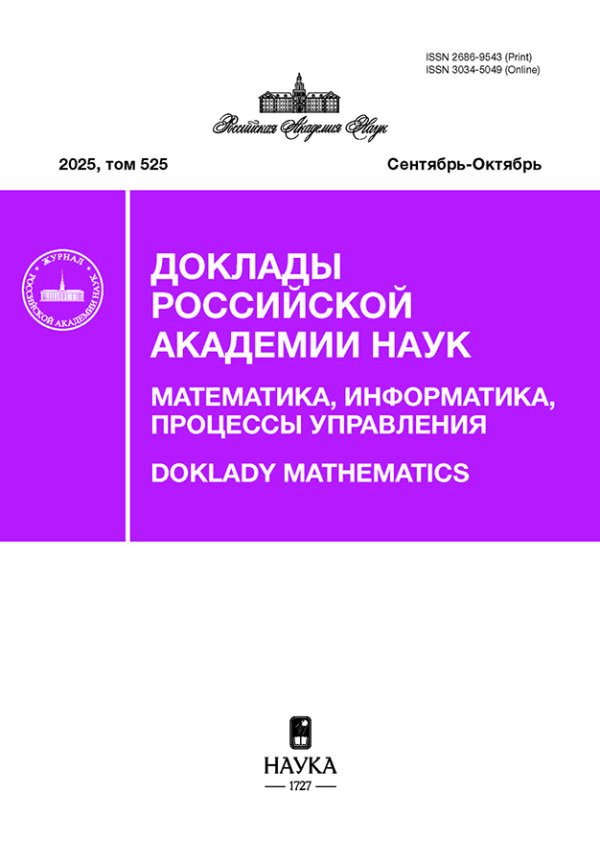IDENTIFICATION OF NODAL POINTS OF ELASTIC INCLUSION IN ELASTIC PLANE
- Authors: Shifrin E.I.1, Kaptsov A.V.1
-
Affiliations:
- Ishlinsky Institute for Problems in Mechanics RAS
- Issue: Vol 509, No 1 (2023)
- Pages: 77-82
- Section: MATHEMATICS
- URL: https://journals.rcsi.science/2686-9543/article/view/142174
- DOI: https://doi.org/10.31857/S268695432370011X
- EDN: https://elibrary.ru/CTPNFY
- ID: 142174
Cite item
Full Text
Abstract
A geometric inverse problem of identifying an isotropic, linearly elastic inclusion in an isotropic, linearly elastic plane is considered. It is assumed that constant stresses are given at infinity, and the displacements and acting loads are known on some closed curve enclosing the inclusion. In the case when the inclusion is a quadrature domain, a method for identifying its nodal points has been developed. A numerical example is considered.
About the authors
E. I. Shifrin
Ishlinsky Institute for Problems in Mechanics RAS
Author for correspondence.
Email: shifrin@ipmnet.ru
Russian Federation, Moscow
A. V. Kaptsov
Ishlinsky Institute for Problems in Mechanics RAS
Author for correspondence.
Email: kaptsov@ipmnet.ru
Russian Federation, Moscow
References
- Andrieux S., Ben Abda A. Identification of planar cracks by complete overdetermined data: inversion formulae // Inverse Problems. 1996. V. 12. P. 553–563.
- Andrieux S., Ben Abda A., Bui H. Reciprocity principle and crack identification // Inverse Problems. 1999. V. 15. P. 59–65.
- Shifrin E.I., Shushpannikov P.S. Identification of small well-separated defects in an isotropic elastic body using boundary measurements // International Journal of Solids and Structures. 2013. V. 50. P. 3707–3716.
- Shifrin E.I., Kaptsov A.V. Identification of multiple cracks in 2D elasticity by means of the reciprocity principle and cluster analysis // Inverse Problems. 2018. V. 34. 015009.
- Davis P.J. The Schwarz function and its applications. The Carus Mathematical Monographs 17. Mathematical Association of America. 1974. 228 p.
- Aharonov D., Shapiro H.S. Domains on which analytic functions satisfy quadrature identities // Journal d’Analyse Mathematique. 1976. V. 30. P. 39–73.
- Gustafsson B. Quadrature identities and the Schottky double // Acta Applicandae Mathematicae. 1983. V. 1. P. 209–240.
- Bell S.R. Quadrature domains and kernel function zipping //Arkiv for matematik. 2005. V. 43. P. 271–287.
- Bell S.R. Density of quadrature domains in one and several complex variables // Complex Variables and Elliptic Equations. 2009. V. 54. P. 165–171.
- Ameur Y., Helmer M., Tellander F. On the uniqueness problem for quadrature domains // Computational Methods and Function Theory. 2021. V. 21. P. 473–504.
- Мусхелишвили Н.И. Некоторые основные задачи математической теории упругости. М. Наука. 1966. 708 с.
- Golub G.H., Milanfar P., Varah J. A stable numerical method for inverting shape from moments // SIAM J. Sci. Comput. 1999. V. 21. P. 1222–1243.
- El Badia A., Ha-Duong T. An inverse source problem in potential analysis // Inverse Problems 2000. V. 16. P. 651–663.
- Kang H., Lee H. Identification of simple poles via boundary measurements and an application of EIT // Inverse Problems. 2004. V. 20. P. 1853–1863.
Supplementary files











